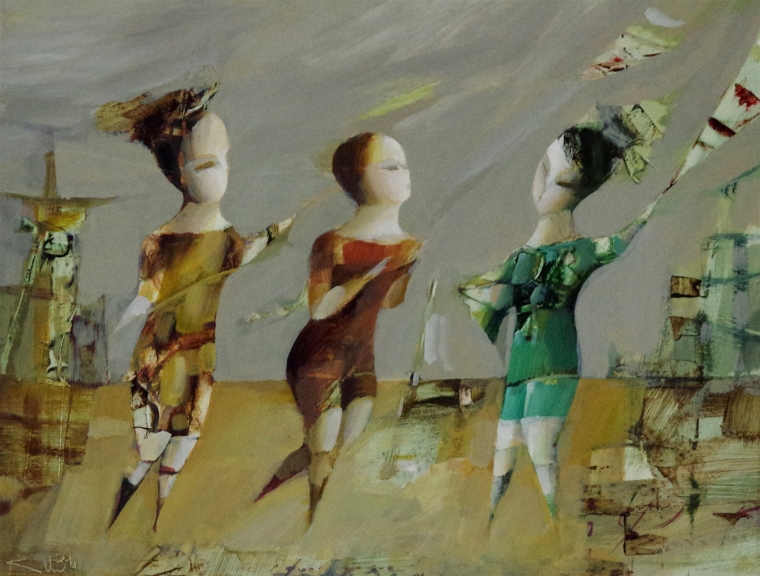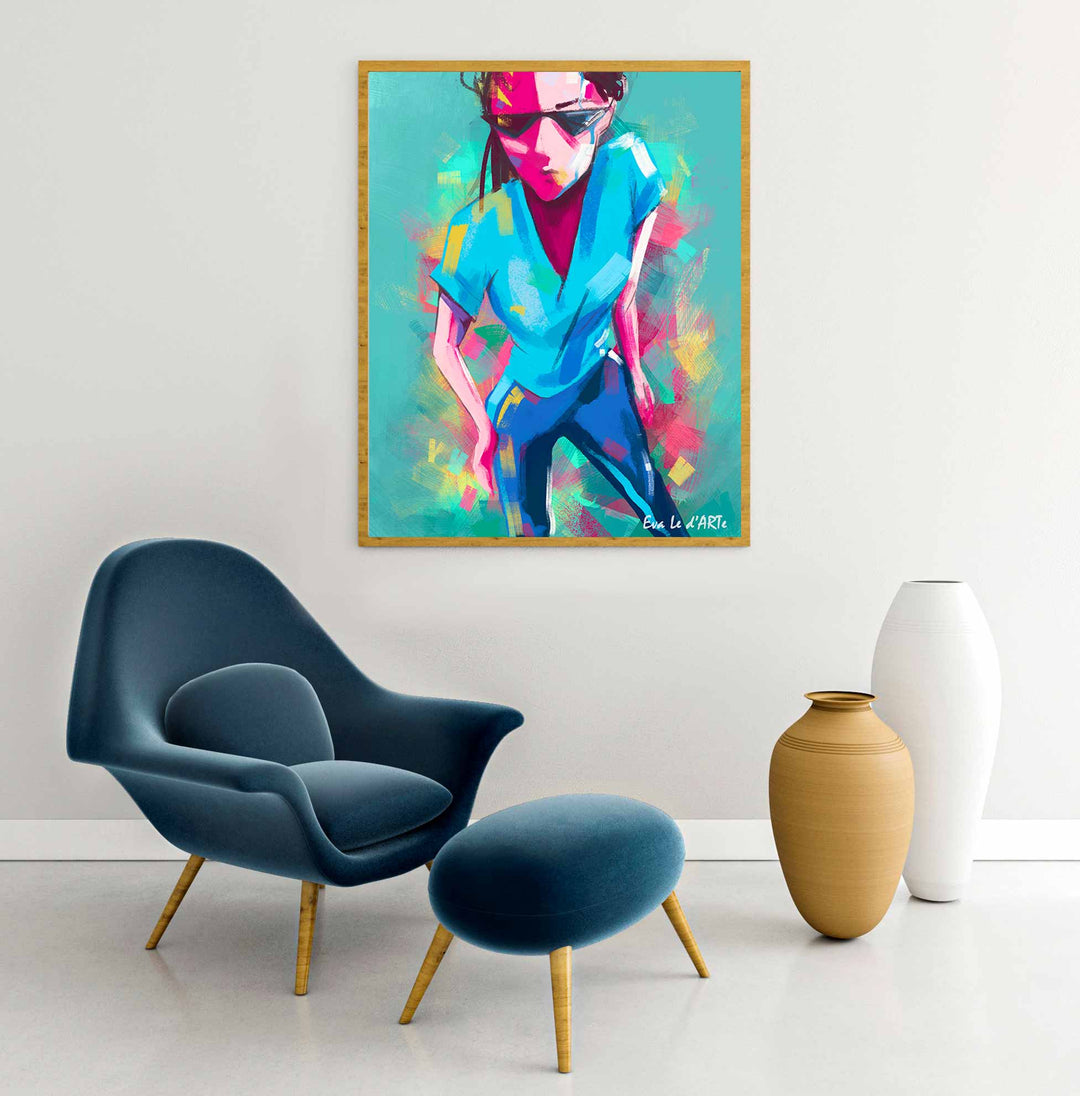Discover the Best Tips for Creating Stunning Figurative Oil Painting Artwork
Discover the Best Tips for Creating Stunning Figurative Oil Painting Artwork
Blog Article
The Evolution of Figurative Oil Paint: Comprehending Its Historical Significance and Modern Interpretations
The advancement of metaphorical oil painting functions as an engaging lens through which to analyze the interplay between imaginative expression and historical context. From the meticulous naturalism of the Renaissance to the stirring power of the Baroque, each age has added layers of meaning and method to this ageless medium. Contemporary musicians, drawing from this abundant heritage, are currently reinterpreting the human figure in manner ins which challenge typical narratives. As we explore these makeovers, one need to think about just how the dialogue in between present and previous informs not only imaginative technique but also societal reflections in an increasingly complex globe.
Origins of Metaphorical Oil Painting
The beginnings of figurative oil painting can be traced back to the early Renaissance in Europe, specifically in the 15th century. The growth of oil paint allowed for greater depth of color and information, enhancing the realism and vibrancy of their work.

In this transformative era, numbers were usually illustrated within contextually abundant atmospheres, showcasing not only their physical attributes but also their mental states. Leaders such as Jan van Eyck and Titian took advantage of the medium's versatility, using layering methods to accomplish luminosity and appearance. This innovation facilitated the representation of elaborate fabrics and the nuances of skin tones, contributing to the development of portraiture and narrative scenes.
Furthermore, the Renaissance focus on humanism fostered an admiration for individuality, which in turn affected musicians to create even more vibrant and relatable figures - figurative oil painting. Because of this, figurative oil paint emerged as an effective car for narration and emotional involvement, preparing for future imaginative motions and designs
Key Historical Movements
Significant historical movements have actually formed the development of metaphorical oil painting, each adding unique viewpoints and strategies that expanded the medium's possibilities. The Renaissance marked a crucial moment, emphasizing realistic look and the human kind, with artists like Leonardo da Vinci and Michelangelo pressing the borders of physiological precision and point of view. Following this, the Baroque era brought remarkable contrasts of light and shadow, exemplified by Caravaggio, who instilled religious styles with intense emotionality.
The 19th century presented Romanticism and Realism, where artists such as Delacroix and Courbet tested timeless suitables, concentrating on private expression and daily life. The arrival of Impressionism additionally reinvented the tool by emphasizing the impacts of light and shade, resulting in a separation from traditional depiction.
In the early 20th century, movements like Expressionism and Cubism redefined figurative paint with abstraction and the exploration of emotional deepness. Each of these movements not just reflected the social adjustments of their times yet also laid the foundation for modern analyses. The interplay between these historical motions has actually created a rich tapestry of styles and ideologies, affecting contemporary musicians in their pursuit of recording the human experience on canvas.
Strategies and Materials Development

Throughout the Baroque period, methods such as chiaroscuro and sfumato emerged, improving the emotional vibration of figurative make-ups. Artists Your Domain Name started to experiment with glazes and impasto, controling texture and brightness. By the 19th century, developments like making use of pre-mixed paints in tubes transformed access, allowing artists to repaint en plein air and capture the short lived effects of light.
The 20th century experienced the intro of synthetic pigments and tools, which increased the palette and changed the uniformity of oil paints. Furthermore, the expedition of new application strategies, such as palette knives and brushes of varying rigidity, further diversified creative expression. Collectively, these innovations reflect the developing connection in between products, techniques, and the artistic vision fundamental in metaphorical oil paint.

Contemporary Analyses
Contemporary analyses of metaphorical oil paint show a dynamic dialogue between tradition and development, where artists challenge developed norms and discover diverse styles. This development shows up in numerous methods, as contemporary artists blend classical strategies with modern-day principles, usually resolving social, political, and individual narratives.
Numerous specialists draw ideas from historic works, yet they infuse their pieces with modern viewpoints, using the human type as a car for discourse on culture, identification, and gender. Artists significantly explore abstraction, distortion, and multimedias, which allows for a broader analysis of the number and its context.
Furthermore, the usage of brilliant color schemes and unique compositions usually offers to disrupt standard seeing experiences, prompting vital interaction from audiences. This change in emphasis prolongs past looks; it reflects an expanding awareness of the intricacies of human experience in an interconnected world.
As figurative oil paint continues to advance, it remains an important tool for exploring the subtleties of contemporary life, symbolizing both a regard for heritage and a commitment to modern idea. The result is an abundant tapestry of expression that reverberates with the complexities of the contemporary human problem.
Effect On Modern Art
The effect of metaphorical oil paint on modern art is profound, as it has continuously motivated a myriad of imaginative movements and practices throughout the 20th and 21st centuries. From Expressionism to Surrealism and beyond, the exploration of the human figure has remained a central motif, allowing artists to share intricate feelings and stories. This emphasis on figurative representation has resulted in a re-examination of traditional techniques, leading to ingenious techniques that blend realism with abstraction.
Additionally, modern artists have accepted figurative oil painting as a means to deal with social and political issues, utilizing the medium to challenge perceptions of identification, sex, and society. The revival of interest in metaphorical operate in current years shows a yearning for connection in additional hints an increasingly electronic globe, where human experience and emotion are paramount.
In addition, the discussion in between figurative oil paint and modern-day art appears in the works of musicians such as Kehinde Wiley and Jenny Saville, that make use of historical referrals while infusing their pieces with modern significance. Ultimately, metaphorical oil painting remains to shape and redefine modern-day creative expression, underscoring its long-lasting importance in great post to read the art globe.
Final Thought
The evolution of metaphorical oil painting underscores its historic significance and flexibility across numerous imaginative motions. From the naturalism of the Renaissance to the emotive expressions of the Baroque and the ingenious approaches of modernity, this tool has consistently transformed. Contemporary analyses reflect vivid colors and unusual structures, fostering essential involvement with social and political themes. Ultimately, figurative oil paint remains an essential medium for checking out the human experience, reverberating profoundly in today's electronic landscape.
The evolution of figurative oil painting serves as a compelling lens with which to check out the interplay between artistic expression and historical context.Considerable historic activities have actually formed the evolution of figurative oil paint, each adding unique viewpoints and methods that broadened the tool's opportunities.As historic activities formed the trajectory of metaphorical oil paint, the strategies and products used by musicians have additionally undergone considerable improvements. figurative oil painting.The effect of figurative oil painting on contemporary art is profound, as it has continually inspired a myriad of artistic activities and techniques throughout the 21st and 20th centuries.The advancement of metaphorical oil painting highlights its historical importance and adaptability throughout numerous imaginative motions
Report this page